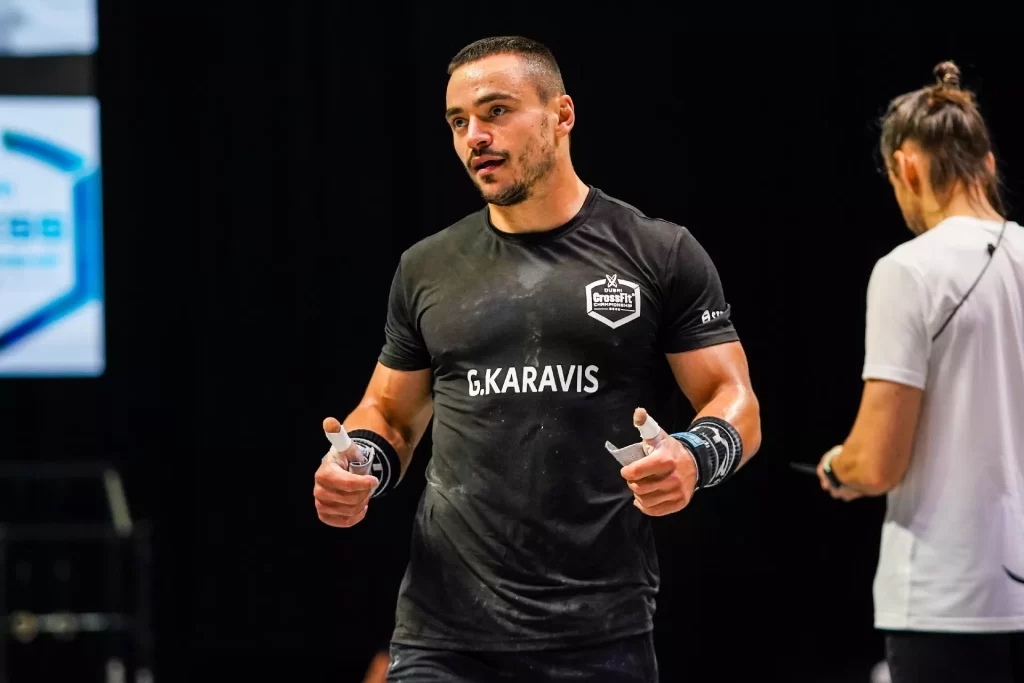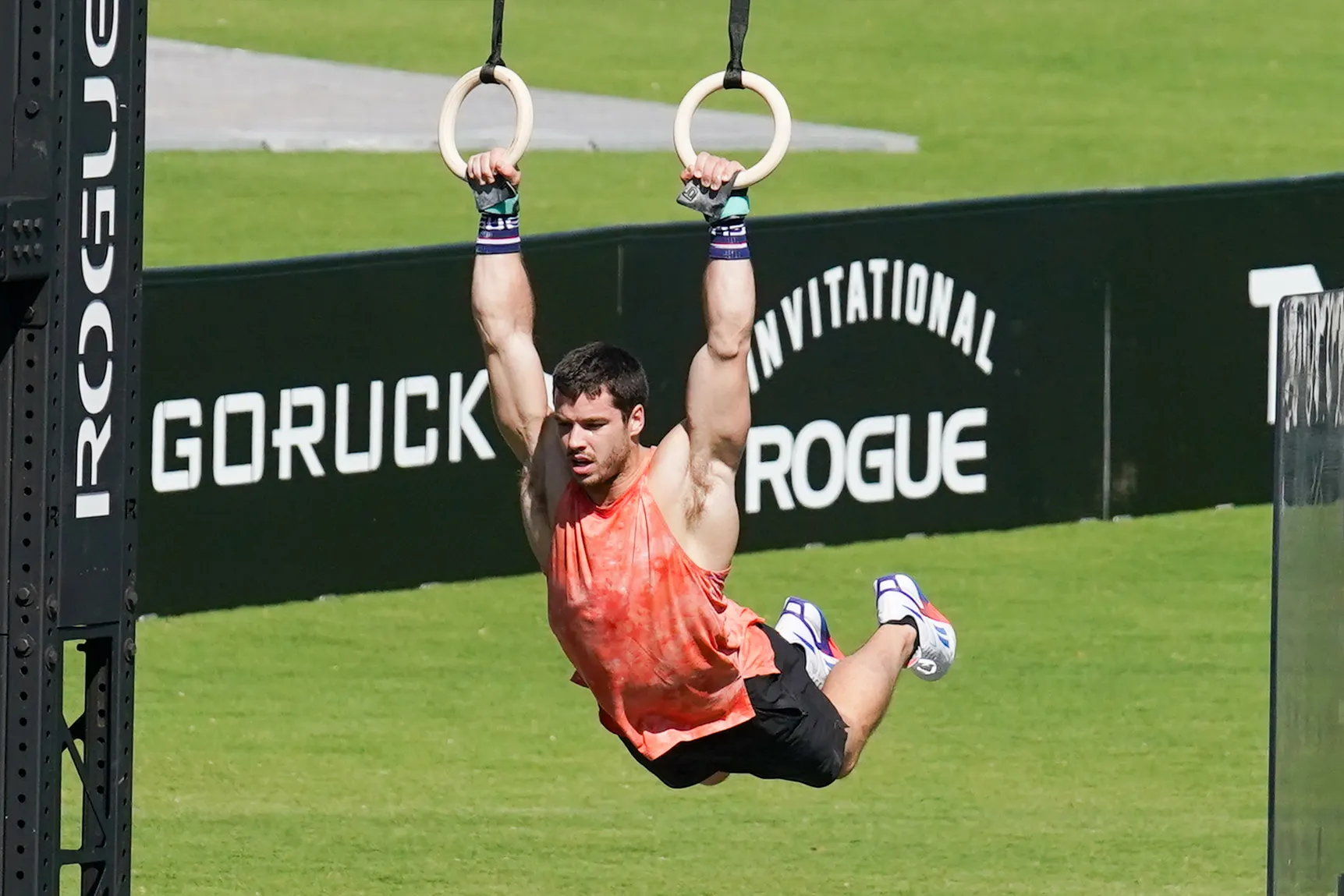Several European Semifinal Athletes Compete In Greece, but Is It A Good Idea this Close to Semis?
Image Credit: Athlete's Eye
Six European semifinalists podiumed at the Athens Throwdown over this past weekend. The competition is a month out from Semifinals and therefore begs the question:
What impact does competing a month prior to a Semifinal have on an athlete’s ability to show up at Semis in their best form?
Women:
- Karin Frey (Slovakia) – 1st, Elite Women
- Elena Carratala Sanahuja (Spain) – 2nd, Elite Women
- Matilda Spanou (Greece) – 3rd, Elite Women
Men:
- Giorgos Karavis (Greece) – 1st, Elite Men
- Alex Kotoulas (Greece) – 2nd, Elite Men
- Michal Wesolowski (Poland) – 2nd, Elite Teams of Two Men
Why It’s a Good Idea
As a competitive CrossFit athlete who is good enough to make a semifinal, being selective about how often, when, and where you compete has to be a critical part of evaluating your season.
The CrossFit season itself demands the Open and Quarterfinals in February/March. If you make it to Semis, you then have a minimum of nearly two months to prepare for what is the most important competition of the year for many. Because not only is making it the Games the primary goal, it often opens up opportunities most who don’t qualify will never have.
For athlete’s who are in serious contention to make the Games, there shouldn’t be too much interruption to training for the online stages of the season. But, for those who are fighting to make it to Semis to begin with, that Quarterfinals weekend is what they’ve been targeting, potentially all year, and they might need a week to recover from that before diving into Semifinal preparations.
Depending on which of those two camps you’re in, the answer to what the two months between quarters and the Games looks like can be quite different. For the people who just narrowly made Semis the ideal situation is that they got a little live competition in the offseason and can use that time to dial in specific skill sets Semifinals demand.
For those who were assuming they’d make Semis, they will almost definitely have a Semifinal simulation weekend at some point before the competition… and probably about a month before it. And, if you’re going to do that anyway, and there’s a decent competition nearby around that time, why not sign up for it?
The other factor for pros is of course financial. A lot of these competitions have between five and ten thousand dollars for the winner and payouts, tapering off from there down to around fifth. Especially since we don’t yet know the prize purse situation at Semis, if you think you can do a little primer before Semis and cash a few thousand dollars at the same time- even better.
Another financial factor for Semis is the ability to use the earnings, in the case of Karavis and Frey almost $9,000 USD, to cover the expenses they will incur to pay for their Semifinal and hopefully they’re Games travel and lodging.

Why It’s a Bad Idea
There are a few obvious reasons why it’s risky to do something like this so close to the most important competition of the year, but also perhaps a less obvious one that if not prepared to handle, can be the most detrimental of all.
The most obvious reason not to compete is the risk of injury. However, to some extent there’s a risk of injury in training every day. Presumably, if there are any nagging injuries, you would forego a competition at a time like this and prioritize health.
The next most concerning reason is how it impacts training leading into Semis. If there’s a month between quarterfinals and a local competition, and then another month between that competition and semifinals… What kind of training is taking place during those months? I suppose every athlete is preparing for something different, but it’s a pronounced interruption to any type of lifting cycle that could be six to eight weeks long otherwise.
A third reason I’ve heard thrown around in conversations about this is how often the body can really handle competing at that level. When you do a competition the intensity is higher, the nervous system takes a beating, and you push the margins more than you would even in a simulation weekend. Don’t be mistaken, you do need live competition reps, but a month out can be cutting it close for some.
The last reason, which may not be so obvious, is the mental aspect. Now, this can certainly be a positive in some cases, but I think it’s much more likely to be negative, unless you have a really good coach, and a really good relationship with your coach. Outside of that I’ve just seen it too many times where the athlete focuses on one thing, or the entire competition, in a negative way that can be difficult to overcome. If, however, you have a great coach in your corner, this can spin to a positive very quickly. Because regardless of what level you compete at, something always goes wrong. The best competitors are the ones who know how to react to that.
The Athens Throwdown was a big success, as it always is. Tons of athletes and divisions, fun and challenging workouts, and a few big names in Europe occupying podium spots in the elite divisions. Frey, Sanahuja, Karavis, and Kotoulas actually all have a track record of competing in these size competitions around Europe during the CrossFit Games season – so it’s nothing out of the ordinary. In all four cases, I don’t think it will impact what we see from them, good or bad, at Semis in Berlin this June.



What do you think?
Show comments / Leave a comment